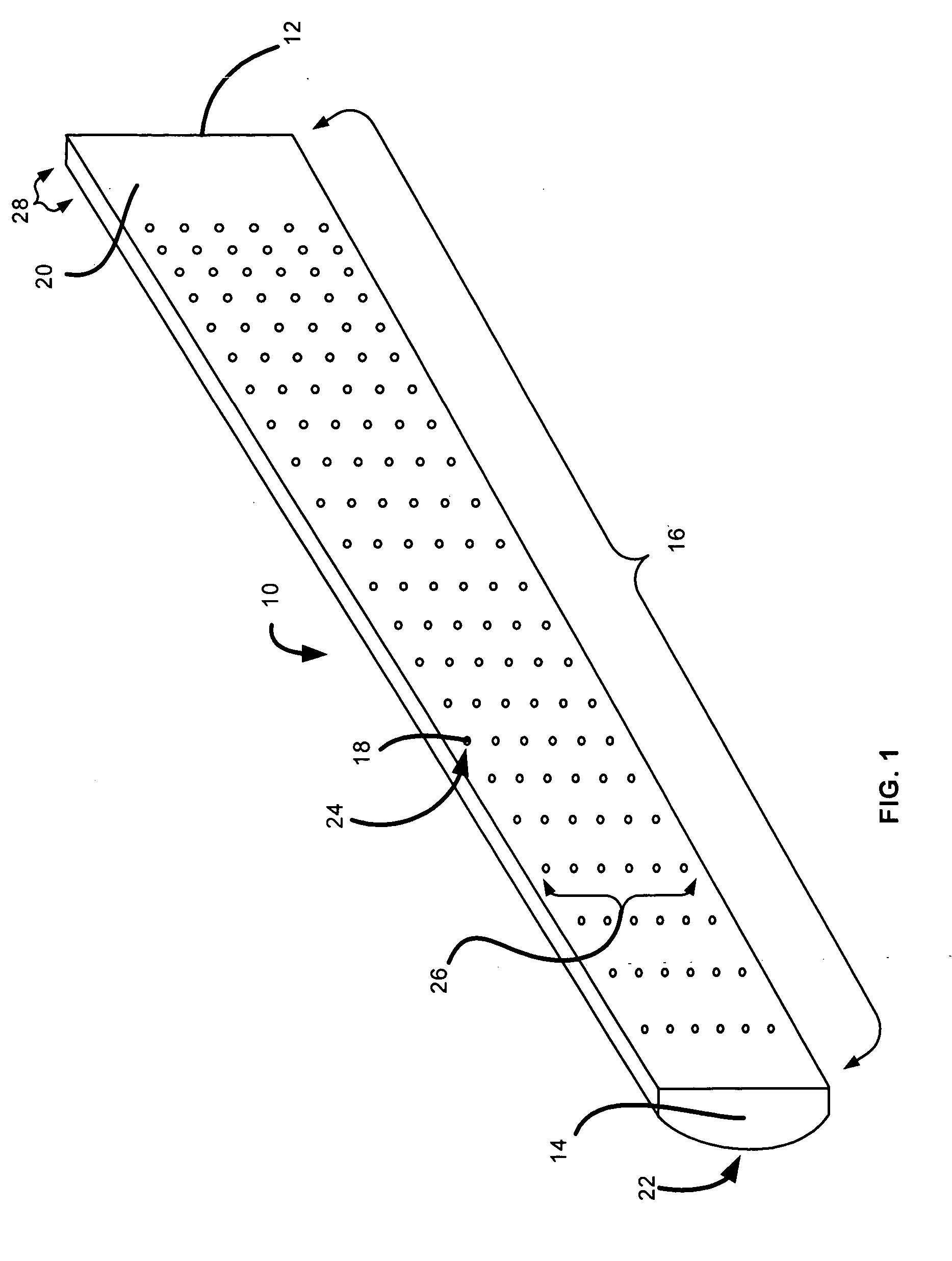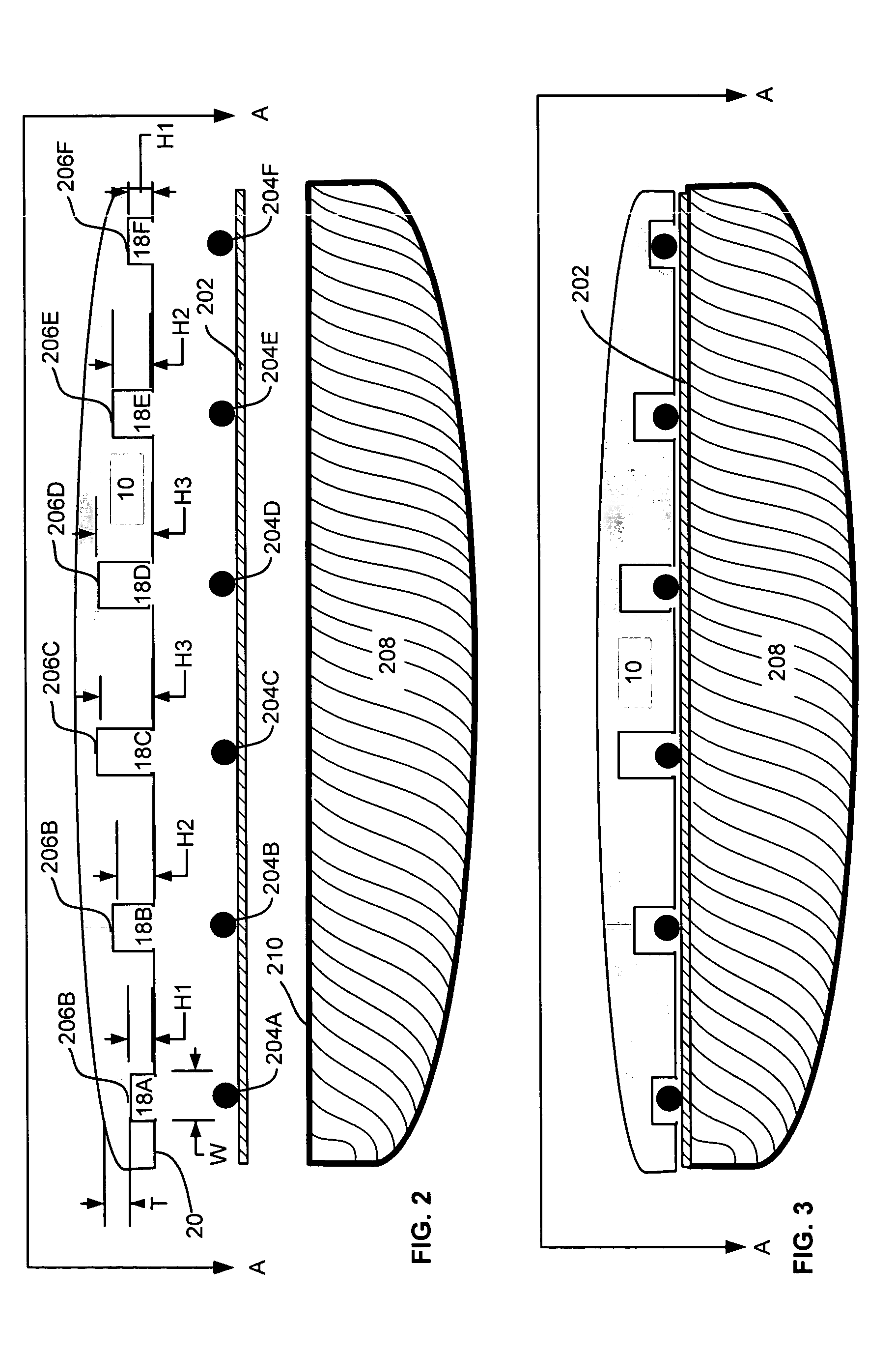Stringed instrument fingerboard for use with a light-system
a stringed instrument and light-system technology, applied in the field of stringed instrument fingerboards for use with light-systems, can solve the problems of difficult and time-consuming, difficult to create, time-consuming and laborious, etc., and achieve the effects of reducing neck flexing, improving neck, and substantial stiffness
- Summary
- Abstract
- Description
- Claims
- Application Information
AI Technical Summary
Benefits of technology
Problems solved by technology
Method used
Image
Examples
Embodiment Construction
[0022] The present invention provides a fingerboard (or fretboard as will be described below) for a stringed instrument and is suitable for use with a light-system that can designate certain finger position by illuminating those positions along the fingerboard corresponding to musical notes and / or chords. The fingerboard is an elongated structure, generally of a size and shape to be mounted or attached to a neck portion of the instrument. Wells corresponding to, or otherwise designating, the finger positions or other positions are disposed within the fingerboard, and extend from openings in a bottom surface toward—but not through—a top surface. Light-emitting devices of the light-system can be disposed within the wells, and are visible from the top surface when illuminated, e.g., visible to a player of the instrument. The fingerboard can be a single-piece, opaque polycarbonate structure, manufactured using injection-molding methods.
[0023] Advantageously, the fingerboard can provide...
PUM
 Login to View More
Login to View More Abstract
Description
Claims
Application Information
 Login to View More
Login to View More - R&D
- Intellectual Property
- Life Sciences
- Materials
- Tech Scout
- Unparalleled Data Quality
- Higher Quality Content
- 60% Fewer Hallucinations
Browse by: Latest US Patents, China's latest patents, Technical Efficacy Thesaurus, Application Domain, Technology Topic, Popular Technical Reports.
© 2025 PatSnap. All rights reserved.Legal|Privacy policy|Modern Slavery Act Transparency Statement|Sitemap|About US| Contact US: help@patsnap.com



